Jade Varden's Blog, page 11
July 16, 2015
Writing 101 Redux: Are Prologues Really That Bad?
Some say that prologues are the worst, but are they right?
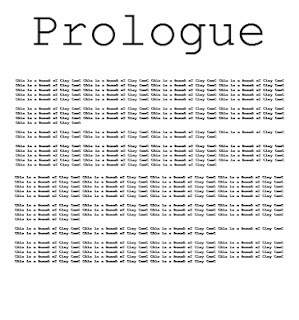
Read this week's Throwback Thursday Writing 101 post to find out, and see how you feel about prologues at the end.

Read this week's Throwback Thursday Writing 101 post to find out, and see how you feel about prologues at the end.
Published on July 16, 2015 05:30
July 15, 2015
Writing 101: Instability
For the purposes of this post, let’s assume that you are not the author of “Gone With the Wind” or “Catcher in the Rye.” Let’s also assume you did not create the Harry Potter series. That leaves pretty much all the other authors out there. This is the group who lives with daily instability. And for those who are wondering, the answer is no. It’s not going away...well, unless you write the next Harry Potter, of course.
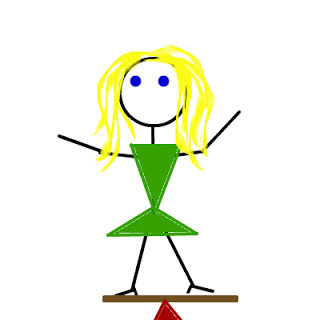
Tightrope
For even established authors and writers, the writing game is a tightrope walk. There are pretty much two ways to make money as an author: write a few books that sell a whole lot of copies, or write a lot of books that sell a great many copies. If you’re not doing that, you’re not really making money. As a freelance writer, most of the time you’re going to need to have a lot of jobs that pay well (and a few that don’t really pay that well) just to make ends meet. And here’s the thing about both authors and writers: the rug can get pulled out from under you at basically any moment. Then, you’ll fall down.
There is very little stability in writing in most all its forms. Writing jobs can end quickly, because websites lose traffic or a magazine loses readers. Books may not sell well even when you’re certain they will. Publishing deals can fall through, literary agents can write “dear John” letters, fans might turn on you, a great job may fire you without much notice at all.
For most of us, writing is a see-saw. There are times when you’re way up high in the air. There are going to be other times when you’re literally sitting on your butt in the dirt. Maybe somebody will come by and kick some sand in your face. Very rarely is it simply steady. So if you want security, if you want safety, being a full-time writer or author may not really be for you. There are times when it will work, but there are also times when it won’t.
This is why many, many writers also supplement their income with part-time or full-time jobs. Many may own their own businesses. Find what works for you best, and find stability where you can. Words don't usually provide it.

Tightrope
For even established authors and writers, the writing game is a tightrope walk. There are pretty much two ways to make money as an author: write a few books that sell a whole lot of copies, or write a lot of books that sell a great many copies. If you’re not doing that, you’re not really making money. As a freelance writer, most of the time you’re going to need to have a lot of jobs that pay well (and a few that don’t really pay that well) just to make ends meet. And here’s the thing about both authors and writers: the rug can get pulled out from under you at basically any moment. Then, you’ll fall down.
There is very little stability in writing in most all its forms. Writing jobs can end quickly, because websites lose traffic or a magazine loses readers. Books may not sell well even when you’re certain they will. Publishing deals can fall through, literary agents can write “dear John” letters, fans might turn on you, a great job may fire you without much notice at all.
For most of us, writing is a see-saw. There are times when you’re way up high in the air. There are going to be other times when you’re literally sitting on your butt in the dirt. Maybe somebody will come by and kick some sand in your face. Very rarely is it simply steady. So if you want security, if you want safety, being a full-time writer or author may not really be for you. There are times when it will work, but there are also times when it won’t.
This is why many, many writers also supplement their income with part-time or full-time jobs. Many may own their own businesses. Find what works for you best, and find stability where you can. Words don't usually provide it.
Published on July 15, 2015 05:30
July 14, 2015
Writing 101: First Draft, Version 2.0
Recently, after many nights of struggle, I managed to finish the final chapter of the first draft of my next novel. But I wouldn’t go as far as saying that I finished the first draft, because I haven’t. For this particular book, I found there was really only one way I could write it and manage to get anything accomplished: sloppily. So I say to all you authors with ugly first drafts, welcome. We are as one.

Building a Book
Did you ever build a model of something for school? I was once tasked with creating a sculpture out of trash, an assignment that lots of people get that I personally think is in poor form. But my grades in Science were always questionable, so I made the sculpture. It was a telephone, because I’m a girl. I started by gluing the popsicle sticks together to create a flat base first. Later, I put together my bubble gum wrapper chain and cut a foam cup to make an ear and mouthpiece. I didn’t add the spray paint until it was all assembled, and it wasn’t until that moment that it looked like something worth looking at. And yes, this bizarre anecdote has a point. A good one.
I couldn’t add the paint until that flat base was built. And that’s the point. My first draft is truly a horrible thing. I went back to look at a chapter, and for almost two paragraphs I was certain I had started typing in a foreign language; there were that many mistakes. A universal translator will be needed to decipher chapter 11, there’s no question about that. But don’t you worry about that. Because before I present this ugly Frankensteinian monster of a book to the public, I’m going to cover it with black spray paint -- just like I did with the popsicle sticks and bubble gum wrappers.
You’ve got to build a foundation first. So I wrote out the necessary scenes that my book had to have in order to tell the story. They’re ugly scenes. They use a bare minimum of words. Right now, those scenes are really just glued-together sticks. I haven’t even put them into a shape yet. But I will. Pretty soon, I’ll glue the wrappers into place and add the numbers I made out of a cut-up sponge. Right after I add all the extra scenes that I skipped over writing so I could hit all my main plot points. Then I’ll decrypt all that messy nonsense I wrote, so that human beings know how to understand it. And eventually, I’ll add the spray paint.
Building a book doesn't have to be neat and it doesn’t have to follow a specific pattern. You can get to the end of the chapter and still have a first draft that really doesn’t qualify for that noble title. I don’t have a first draft just yet, but I’ve got a nice, firm base of popsicle sticks. That’s just how this book needed to be built. Now, start building yours in any way that feels right to you.

Building a Book
Did you ever build a model of something for school? I was once tasked with creating a sculpture out of trash, an assignment that lots of people get that I personally think is in poor form. But my grades in Science were always questionable, so I made the sculpture. It was a telephone, because I’m a girl. I started by gluing the popsicle sticks together to create a flat base first. Later, I put together my bubble gum wrapper chain and cut a foam cup to make an ear and mouthpiece. I didn’t add the spray paint until it was all assembled, and it wasn’t until that moment that it looked like something worth looking at. And yes, this bizarre anecdote has a point. A good one.
I couldn’t add the paint until that flat base was built. And that’s the point. My first draft is truly a horrible thing. I went back to look at a chapter, and for almost two paragraphs I was certain I had started typing in a foreign language; there were that many mistakes. A universal translator will be needed to decipher chapter 11, there’s no question about that. But don’t you worry about that. Because before I present this ugly Frankensteinian monster of a book to the public, I’m going to cover it with black spray paint -- just like I did with the popsicle sticks and bubble gum wrappers.
You’ve got to build a foundation first. So I wrote out the necessary scenes that my book had to have in order to tell the story. They’re ugly scenes. They use a bare minimum of words. Right now, those scenes are really just glued-together sticks. I haven’t even put them into a shape yet. But I will. Pretty soon, I’ll glue the wrappers into place and add the numbers I made out of a cut-up sponge. Right after I add all the extra scenes that I skipped over writing so I could hit all my main plot points. Then I’ll decrypt all that messy nonsense I wrote, so that human beings know how to understand it. And eventually, I’ll add the spray paint.
Building a book doesn't have to be neat and it doesn’t have to follow a specific pattern. You can get to the end of the chapter and still have a first draft that really doesn’t qualify for that noble title. I don’t have a first draft just yet, but I’ve got a nice, firm base of popsicle sticks. That’s just how this book needed to be built. Now, start building yours in any way that feels right to you.
Published on July 14, 2015 05:30
July 13, 2015
Dr. Seuss Never Had Kids, And Other Stuff You Can Write About Anyway
I'm fairly certain that there isn't one child born in America after 1955 who has not read a Dr. Seuss book, or had one read to them. Everyone knows who the Cat in the Hat is, the dangers of eating green eggs and ham, and that the ocean has red fish in it. But here's the thing that shocked me the first time I found out about it: Dr. Seuss never had any children. There's all sort stuff you can write about anyway, even if you haven't had every experience you're going to put on the page.
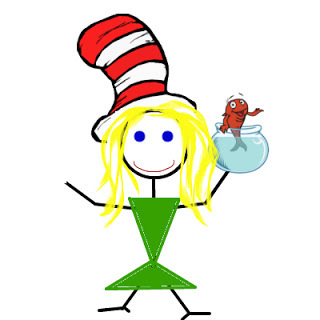
Oh, the Places You Will Write
One of my favorite authors took a research trip to write her books, which are set in the Ice Age. I read all about the trip, because she wrote about that as well, with great interest. She trekked all around those caves in France with the caveman drawings, explored all around the Danube, looked at artifacts in museums. And for a few minutes, I was really envious of that trip. Then I realized something important: I don't really want to go on a trip like that. Walk around in a cave and explore a riverbank? Not likely. And the thing is, I don't have to do that. There are all sorts of things you can write about anyway, like if you’re a children’s book author with no kids. We were all children once…some more than others, perhaps. It isn’t always easy to remember the feeling of being a child, when the world was big, but you can probably remember something that happened to you as a child. Riding a bike, maybe, or opening that amazing present that one time. Even a children’s author with no children has some frame of reference. Once you’ve got that starting point, you’re writing.
Maybe you haven’t been to the famous cave with the caveman drawings, but have you seen a cave? Because frankly, they all have the same features. Taking a trip is really good research. But looking at pictures and reading information online can be pretty good research, too. Dr. Seuss didn’t have kids, but at some point he learned how to speak to them. He used his voice to speak to children through books, and he is one of the most successful and well-known writers ever to do so.
So be like me, and Dr. Seuss. Find ways to write what you want to write, even if you can’t take a trip over to France to study it first.

Oh, the Places You Will Write
One of my favorite authors took a research trip to write her books, which are set in the Ice Age. I read all about the trip, because she wrote about that as well, with great interest. She trekked all around those caves in France with the caveman drawings, explored all around the Danube, looked at artifacts in museums. And for a few minutes, I was really envious of that trip. Then I realized something important: I don't really want to go on a trip like that. Walk around in a cave and explore a riverbank? Not likely. And the thing is, I don't have to do that. There are all sorts of things you can write about anyway, like if you’re a children’s book author with no kids. We were all children once…some more than others, perhaps. It isn’t always easy to remember the feeling of being a child, when the world was big, but you can probably remember something that happened to you as a child. Riding a bike, maybe, or opening that amazing present that one time. Even a children’s author with no children has some frame of reference. Once you’ve got that starting point, you’re writing.
Maybe you haven’t been to the famous cave with the caveman drawings, but have you seen a cave? Because frankly, they all have the same features. Taking a trip is really good research. But looking at pictures and reading information online can be pretty good research, too. Dr. Seuss didn’t have kids, but at some point he learned how to speak to them. He used his voice to speak to children through books, and he is one of the most successful and well-known writers ever to do so.
So be like me, and Dr. Seuss. Find ways to write what you want to write, even if you can’t take a trip over to France to study it first.
Published on July 13, 2015 05:30
July 9, 2015
Writing 101 Redux: Do You Pay for Your Reviews?
All indie authors will be faced with a choice at some point, and you'll have to ask yourself a question: should you pay for your reviews?

Read today's Throwback Writing 101 to see the good and the bad of this option, and figure out what's going to work best for you.

Read today's Throwback Writing 101 to see the good and the bad of this option, and figure out what's going to work best for you.
Published on July 09, 2015 05:30
July 8, 2015
Writing 101: Catching Up a Series
Catching up a series is the chore you have to face the moment you begin book number two. The problem with writing a series is that you have to begin each book as if your reader hasn’t read the other books in the series. But you also have to write it in a way that won’t annoy fans who are all caught up on all the other books so far. If you can balance yourself on this writing tightrope, you can create a great series. It’s actually much simpler to do than you probably think.

The Story So Far
I’m not going to lie: I’ve read book series out of order. It’s not my fault if book 1 isn’t available...or I don’t feel like reading it. I can’t help it if I’d rather skip straight to the last book than to start all over. Maybe I’ll get to that, eventually. The point is, I may not always be current on your book series when I pick up that book. What are you going to do about it?
No matter how you write it, you’re going to have to catch readers up on the story so far with every installment of your series, from book 2 to book 200. But you cannot simply write a prologue that’s essentially a re-cap of the story. Well, you can, but most people generally agree that this is no good whatsoever. It’s boring for readers who did take the time to read books 2 through 199, and it’s a little condescending to readers who are just starting. You can still give a re-cap. Just get a little more creative about it, and readers will hardly even notice that you’re doing it
Confusion is okay, at least a little bit and at least at first. It’s okay to throw your readers into the middle of the story and put them right inside a situation. But then, start filling in the blanks. Slowly introduce the backstory that all readers need to know, whether or not they already read it before. If you can, draw out the revelation in a natural way. Frame it around an existing scene or dialogue that’s already taking place, so you can start getting readers caught up on your series in a sensible, slow way.
Take your time revealing the backstory of the series, but not too much. Get the recap over with so you can get on with the rest of the story, and get all the readers on the same page -- pun intended.

The Story So Far
I’m not going to lie: I’ve read book series out of order. It’s not my fault if book 1 isn’t available...or I don’t feel like reading it. I can’t help it if I’d rather skip straight to the last book than to start all over. Maybe I’ll get to that, eventually. The point is, I may not always be current on your book series when I pick up that book. What are you going to do about it?
No matter how you write it, you’re going to have to catch readers up on the story so far with every installment of your series, from book 2 to book 200. But you cannot simply write a prologue that’s essentially a re-cap of the story. Well, you can, but most people generally agree that this is no good whatsoever. It’s boring for readers who did take the time to read books 2 through 199, and it’s a little condescending to readers who are just starting. You can still give a re-cap. Just get a little more creative about it, and readers will hardly even notice that you’re doing it
Confusion is okay, at least a little bit and at least at first. It’s okay to throw your readers into the middle of the story and put them right inside a situation. But then, start filling in the blanks. Slowly introduce the backstory that all readers need to know, whether or not they already read it before. If you can, draw out the revelation in a natural way. Frame it around an existing scene or dialogue that’s already taking place, so you can start getting readers caught up on your series in a sensible, slow way.
Take your time revealing the backstory of the series, but not too much. Get the recap over with so you can get on with the rest of the story, and get all the readers on the same page -- pun intended.
Published on July 08, 2015 05:30
July 7, 2015
Writing 101: The Mini-Cliffhanger
There are some books that feel impossible to put down. You can’t stop turning pages. You keep on reading because you’ve got to find out what happens next. These are the books that readers remember. These are the type so books you want to write. And there’s a trick you can use it make it happen: the mini-cliffhanger.
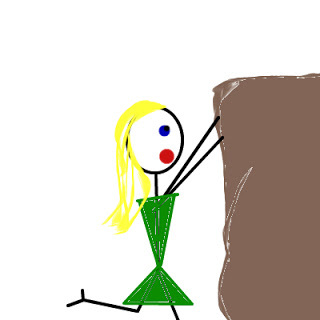
Hanging By a Moment With You
Lots of readers hate cliffhanger endings in a book, but you can put all sorts of mini-cliffhangers in your book and still wrap things up neatly at the end. If you want to keep your readers turning the pages, put your cliffhangers where they belong: at the end of chapters.
The mini-cliffhanger is that moment that happens at the very end of a chapter. Maybe it’s a surprise visitor, a shocking revelation or some other sort of surprise. The rest of the story continues immediately in the next chapter, of course, but ending a chapter this way encourages the reader to keep going.
Lots of readers stop at the end of a chapter. One chapter before bed, that’s all. But when you put a mini-cliffhanger at the end of that chapter, maybe they’ll extend that reading session. They can’t stop reading now, not when Melissa has just announced that she’s pregnant. They’ll go to sleep later, after finding out what happens right after Roger tells everyone he’s in love with Tom.
You don’t want them to find it easy to put your book down at the end of a chapter. You want to leave them wondering, questioning, wanting to read more. The mini-cliffhanger is a perfect way to do that. So pick an exciting moment to end your chapters, instead of allowing scenes to resolve at the end. Each chapter should be a thrilling continuation, not a natural stopping point.

Hanging By a Moment With You
Lots of readers hate cliffhanger endings in a book, but you can put all sorts of mini-cliffhangers in your book and still wrap things up neatly at the end. If you want to keep your readers turning the pages, put your cliffhangers where they belong: at the end of chapters.
The mini-cliffhanger is that moment that happens at the very end of a chapter. Maybe it’s a surprise visitor, a shocking revelation or some other sort of surprise. The rest of the story continues immediately in the next chapter, of course, but ending a chapter this way encourages the reader to keep going.
Lots of readers stop at the end of a chapter. One chapter before bed, that’s all. But when you put a mini-cliffhanger at the end of that chapter, maybe they’ll extend that reading session. They can’t stop reading now, not when Melissa has just announced that she’s pregnant. They’ll go to sleep later, after finding out what happens right after Roger tells everyone he’s in love with Tom.
You don’t want them to find it easy to put your book down at the end of a chapter. You want to leave them wondering, questioning, wanting to read more. The mini-cliffhanger is a perfect way to do that. So pick an exciting moment to end your chapters, instead of allowing scenes to resolve at the end. Each chapter should be a thrilling continuation, not a natural stopping point.
Published on July 07, 2015 05:30
July 6, 2015
The Secret Dark Side of Beatrix Potter
Children’s book lovers adore Beatrix Potter’s tales of Peter Rabbit and other living creatures. Self-published authors admire her pioneering efforts in the indie writing world. But many people don’t know that Beatrix Potter captured her own animals to study, before she meticulously skinned and dissected them to study them from the inside out. Lots of authors have a dark side, and Beatrix Potter did, too.
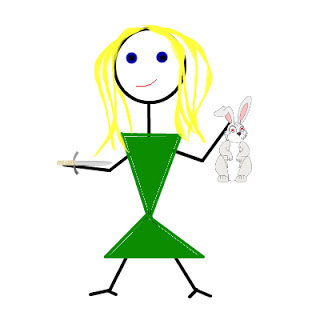
And Your Little Dog, Too
There’s a reason that Beatrix Potter’s illustrations of animals are so lifelike, so perfectly detailed and startlingly accurate. She spent a great deal of time studying small animals. She was well-educated for her gender and her era, efforts that were encouraged by her parents. Beatrix Potter was intellectually curious and rather bold for a woman of her day. That’s why she wasn’t afraid to capture animals, peel off their skins and cut them open.
It’s just a little bit surprising that she’s also a celebrated and well-loved children's author, too.
Beatrix Potter had a bit of a secret dark side, like lots of authors. How can one write of darkness without knowing darkness? Authors train themselves to be observant and analytical, and sometimes this can manifest itself in strange ways. For Beatrix Potter, that meant scientifically studying the creatures that she wrote about so well.
Be analytical. Be observant. Study things. It will help to make you a better writer if you make an effort to understand the world you’re going to write about. Luckily, you’re writing during the Internet age. You don’t have to capture and dissect your own animals, because there are lots of less icky ways to do research now.

And Your Little Dog, Too
There’s a reason that Beatrix Potter’s illustrations of animals are so lifelike, so perfectly detailed and startlingly accurate. She spent a great deal of time studying small animals. She was well-educated for her gender and her era, efforts that were encouraged by her parents. Beatrix Potter was intellectually curious and rather bold for a woman of her day. That’s why she wasn’t afraid to capture animals, peel off their skins and cut them open.
It’s just a little bit surprising that she’s also a celebrated and well-loved children's author, too.
Beatrix Potter had a bit of a secret dark side, like lots of authors. How can one write of darkness without knowing darkness? Authors train themselves to be observant and analytical, and sometimes this can manifest itself in strange ways. For Beatrix Potter, that meant scientifically studying the creatures that she wrote about so well.
Be analytical. Be observant. Study things. It will help to make you a better writer if you make an effort to understand the world you’re going to write about. Luckily, you’re writing during the Internet age. You don’t have to capture and dissect your own animals, because there are lots of less icky ways to do research now.
Published on July 06, 2015 05:30
June 25, 2015
Writing 101 Redux: Anyways...
When should you be using anyways in your storytelling...if ever? Look back at this week's Throwback Thursday Writing 101 to find out.


Published on June 25, 2015 05:30
June 24, 2015
Writing 101: Unnecessary Storytelling
So I’m not going to point fingers at any authors, but I will say that lately I was exposed to some unnecessary storytelling...and I’m kind of mad about it. Misdirecting your readers is one thing, but wasting their time falls into a whole new category. So let’s find out if you’re guilty of unnecessary storytelling, because maybe you are.

Writing and Writing
For every author, there is that moment when thought no longer even seems to apply. Suddenly the words are just pouring out, so hot and thick your fingers can’t even keep up with them. And you’re in such a zone, Mount Vesuvius couldn’t possibly shake up your concentration. You are writing, and it’s going well. Iit’s when you’re in this zone that unnecessary storytelling might start to sneak in. It happens more often than you think.
There is a difference between being overly-descriptive and telling unnecessary story. I get bored sometimes when Jean Auel goes off on a tangent about how the wooly mammoths are behaving and what the lichens look like, or whatever, but that’s all still relevant to the story. Unnecessary storytelling is a whole different animal altogether.
Does every single character in your book serve a function and advance the plot? Does every single scene lead to another scene that advances the plot? If you can’t answer yes to both these queries, then I’m afraid you’re guilty of unnecessary storytelling.
Here’s an example, and I’ll try to be broad. Supposed you’re telling an epic story that’s character-rich. Maybe you introduce a character with a compelling backstory, and write a scene in your story wherein this character's backstory is discussed but not revealed. However, there is the promise that it will be revealed in the future.
This is a classic literary technique, and a good one. Now the reader is engaged. The reader is coming up with theories about this character’ story. Who are they? Where did they come from? What secrets are still going to be revealed? The reader is looking for clues, now, as the story progresses. They’re trying to unravel the mystery.
Now let’s suppose that the character dies, just like that. And now they are dead and who the heck cares about the backstory that you’ve wasted four entire lengthy books debating and wondering about? No one, that’s who.
And that’s unnecessary storytelling. Don’t tempt your readers with a carrot and then never let them eat it. Don’t introduce a character unless that character’s role is going to come to a full and complete resolution. Don’t write a single scene unless it serves a purpose, to reveal information or otherwise advance the plot.
If you’re doing all that, you won’t commit the sin of unnecessary storytelling -- and I will never write an angry blog post about your books.

Writing and Writing
For every author, there is that moment when thought no longer even seems to apply. Suddenly the words are just pouring out, so hot and thick your fingers can’t even keep up with them. And you’re in such a zone, Mount Vesuvius couldn’t possibly shake up your concentration. You are writing, and it’s going well. Iit’s when you’re in this zone that unnecessary storytelling might start to sneak in. It happens more often than you think.
There is a difference between being overly-descriptive and telling unnecessary story. I get bored sometimes when Jean Auel goes off on a tangent about how the wooly mammoths are behaving and what the lichens look like, or whatever, but that’s all still relevant to the story. Unnecessary storytelling is a whole different animal altogether.
Does every single character in your book serve a function and advance the plot? Does every single scene lead to another scene that advances the plot? If you can’t answer yes to both these queries, then I’m afraid you’re guilty of unnecessary storytelling.
Here’s an example, and I’ll try to be broad. Supposed you’re telling an epic story that’s character-rich. Maybe you introduce a character with a compelling backstory, and write a scene in your story wherein this character's backstory is discussed but not revealed. However, there is the promise that it will be revealed in the future.
This is a classic literary technique, and a good one. Now the reader is engaged. The reader is coming up with theories about this character’ story. Who are they? Where did they come from? What secrets are still going to be revealed? The reader is looking for clues, now, as the story progresses. They’re trying to unravel the mystery.
Now let’s suppose that the character dies, just like that. And now they are dead and who the heck cares about the backstory that you’ve wasted four entire lengthy books debating and wondering about? No one, that’s who.
And that’s unnecessary storytelling. Don’t tempt your readers with a carrot and then never let them eat it. Don’t introduce a character unless that character’s role is going to come to a full and complete resolution. Don’t write a single scene unless it serves a purpose, to reveal information or otherwise advance the plot.
If you’re doing all that, you won’t commit the sin of unnecessary storytelling -- and I will never write an angry blog post about your books.
Published on June 24, 2015 05:30



